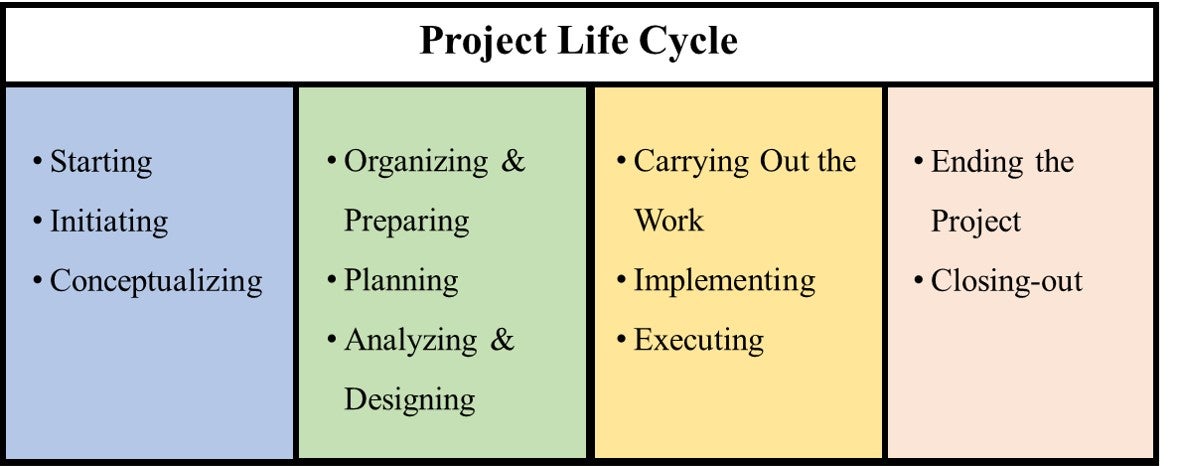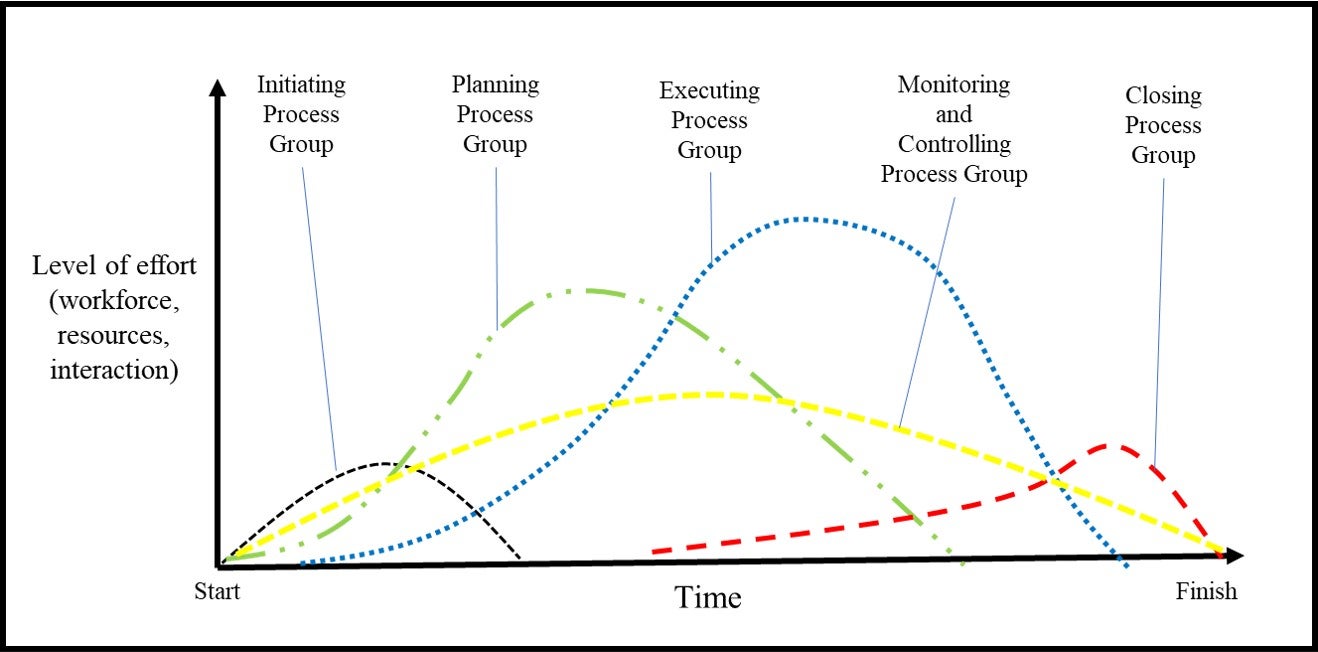Chapter 1. Introduction to Project Management
1.5 Project Management Life Cycle and Process Groups
Projects start their life by developing the project’s foundations (i.e., primary objectives, high-level scope, schedule, budget and risks, project team composition), continue with planning all the knowledge areas, executing all the activities, and producing the outcomes (i.e., products, services, or processes), and end by reaching a close-out by archiving all the documents, completing all administrative works, and disbanding the team. This is the life cycle of a project, which makes it temporary and unique. This life cycle is composed of stages or phases which are generically named as starting (initiating, conceptualization), planning (organizing and preparing), implementing (executing, carrying out), and termination (close-out, ending) (Figure 1.1). These phases can also be named differently based on the industry, product scope, project complexity and size, needs of management, legal or regulatory requirements, decision points such as go/no-go decisions, and milestone review. For example, if the project aims to create an information system such as a payroll system, project life cycle stages can be named as feasibility study, elicitation of customer requirements, development of solutions, design, creating prototypes, coding, testing, transitioning, commissioning, milestone review, lessons learned, administrative closure, and archiving.

While project life cycle stages offer a step-by-step process to manage a project, practical issues require focusing on processes and their groups as described by the PMBOK Guide 6th Edition. The project life cycle is managed by executing a series of project management activities known as project management processes. These processes are prescriptive, which means that they explicate each process within an input-output diagram where various project management tools and techniques are utilized. Although they are very helpful for project managers, PMBOK Guide 6th edition always emphasizes the tailoring of processes and techniques based on each project’s own characteristics. This is why PMBOK Guide 7th Edition adopted a new approach through which the processes have been replaced by principles. Nevertheless, project managers can still benefit from the process-centered approach as processes provide a comprehensive guideline.
Each process makes use of inputs and produces outputs by using appropriate tools and techniques. These processes can be implemented globally across industries. For example, one of the processes, developing a project charter, is the starting point for all projects regardless of their industry, size, complexity, and location. This process uses business documents, agreements, enterprise environmental factors, and organizational process assets as inputs. It produces the outputs as a project charter and assumption log by utilizing tools and techniques such as expert judgment, data gathering, interpersonal and team skills, and meetings.
Different from project life cycle phases, but in line with them, these processes are grouped inside five project management process groups according to the PMBOK Guide 6th Edition. Names of these groups and their purposes are provided below:
- Initiating
- To define a new project or a new phase of an existing project by obtaining authorization to start the project or phase.
- Planning
- To establish the scope of the project, refine objectives, and define the course of action required to attain the objectives.
- Executing
- To complete the work defined in the project management plan to satisfy the project requirements.
- Monitoring and Controlling
- To track, review, and regulate the progress and performance of the project, to identify any areas in which changes to the plan are required, and to initiate the corresponding changes.
- Closing
- To formally complete or close the project, phase, or contract.
An important factor that distinguishes these process groups from the life cycle stages is the addition of monitoring and controlling as a separate process group. Monitoring and controlling process group is performed throughout the project as it is of high importance and necessity to ensure that the project is on the track, and to intervene in problems when detected. As seen in Figure 1.2, these process groups overlap with one another, and the sharp boundaries in the project life cycle disappear, which makes it more realistic. For instance, planning continues with lower levels of process interaction and effort while executing process group is conducted since plans and product requirements are subject to changes due to the factors such as changes in stakeholder requirements, dynamic market conditions, and technological advancements.


